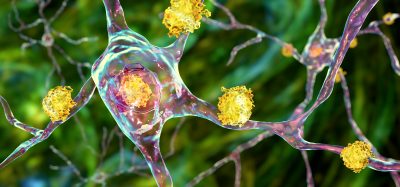Potential new therapies for primary open-angle glaucoma
Posted: 20 February 2024 | Drug Target Review | No comments yet
Researchers have gained a better understanding of the genes and biological processes that could influence POAG pathogenesis.


Scientists from Massachusetts Eye and Ear have uncovered key genes, biological processes and cell types that could influence the pathogenesis of primary open-angle glaucoma (POAG) in intraocular pressure (IOP)-dependent and independent manners.
Currently, POAG is the leading cause of blindness in people over the age of 55 and there is no cure as its biological mechanisms are not well understood. Elevated IOP is a major risk factor for the disease, but many patients with glaucoma have normal eye pressure and still lose vision.
However, now, integrative analyses have found hundreds of genes and regulatory effects underlying over 100 loci associated with POAG and/or IOP that could contribute to glaucoma risk through altered gene expression levels. These genes are enriched in biological pathways associated with disease mechanisms, including elastic fibre formation and extracellular matrix organisation, vascular development, and neuronal related processes.
Also, an atlas of the whole eye was created by utilising single-nucleus gene expression data from the aqueous humour outflow pathways, retina, and the optic nerve head and surrounding posterior tissues. The researchers identified known and less well-established cell types in which gene dysregulation may affect optic nerve degeneration.
The cell types included fibroblasts in the conventional and unconventional outflow pathways, astrocytes in retina and optic nerve head, oligodendrocytes and vascular cells in the optic nerve head, and fibroblasts in the surrounding region of the optic nerve head.
The pathways identified in their analysis can impact various structures in the eye, suggesting multiple potential mechanisms that can interact with different genes and cell types that may contribute to POAG. This could offer novel insights about gene expression and post-transcriptional gene regulation that could improve drug design for glaucoma.
“Our work has generated new insights into POAG mechanisms, which could inform the development of novel therapies targeting IOP reduction and neuroprotection,” explained Dr Ayellet Segrè. “For example, this research suggests that targeting neuronal support cells, in addition to retinal ganglion cells, may be important to consider in the design of new drug and cell therapies. Through our ongoing work aimed at detecting genetic regulation of gene expression in glaucoma-relevant eye tissues, we hope in the future, to provide a more complete understanding of POAG risk and IOP variation.”
This study was published in Nature Communications.
Related topics
Drug Targets, Genetic Analysis
Related conditions
Glaucoma
Related organisations
Massachusetts Eye and Ear
Related people
Dr Ayellet Segrè (Mass Eye and Ear)








